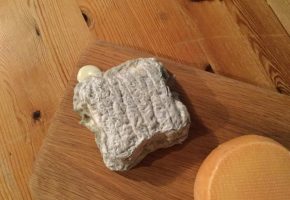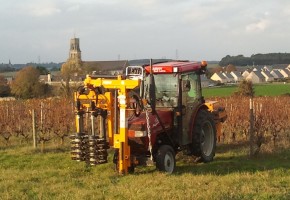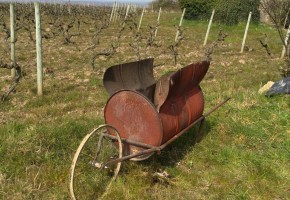
Pruning is probably the most important factor when it comes to producing quality wine. There are different ways to prune vines. Here in the Loire around us in Anjou we mostly see what we call a Single Guyot or Double Guyot system.

This is what we call a cane replacement system. Each year canes of one year old wood (one for single Guyot and 2 for double Guyot) are chosen and it is these canes that will bear the fruit the following year. In addition, spurs (one for single Guyot or 2 for double Guyot) are left to provide a back up in the event of a frost or to produce a cane that can be used the following year.

An unpruned Cabernet Franc vine

A Cabernet Franc vine pruned to the double Guyot system leaving a short cane on either side and a spur (where possible)
Once the cane has been chosen, all the other canes are removed and the cane is cut to leave a precise number of buds or eyes. It is this that will determine the potential yield of the vine that season (although nature may have an impact upon yield if frost or hail damage occurs). Pruning takes place in the winter months when the vines are dormant and in the spring when temperatures rise, the sap rises and the wounds from pruning the vines ‘weep’. When they have become more flexible, canes can then be manipulated more easily and they are secured to a permanent wire (in the case of single Guyot)

Single Guyot vines can be secured to a permanent wire
There are many things to take into account when choosing the cane as well as its health. It must be facing the right direction, and must be close to the trunk to keep fruit in the ‘fruiting zone’. Each vine has to be treated differently and although it’s not complicated, it does require an understanding of the vine, how it behaves and the impact upon the vine both in the current year and the year after.
In the Loire valley pruning is done by hand and generally takes several months. The introduction of electric pruners has made life easier for pruners but it remains hard work and essential to producing high quality fruit. High quality fruit has the capacity to make high quality wine…







